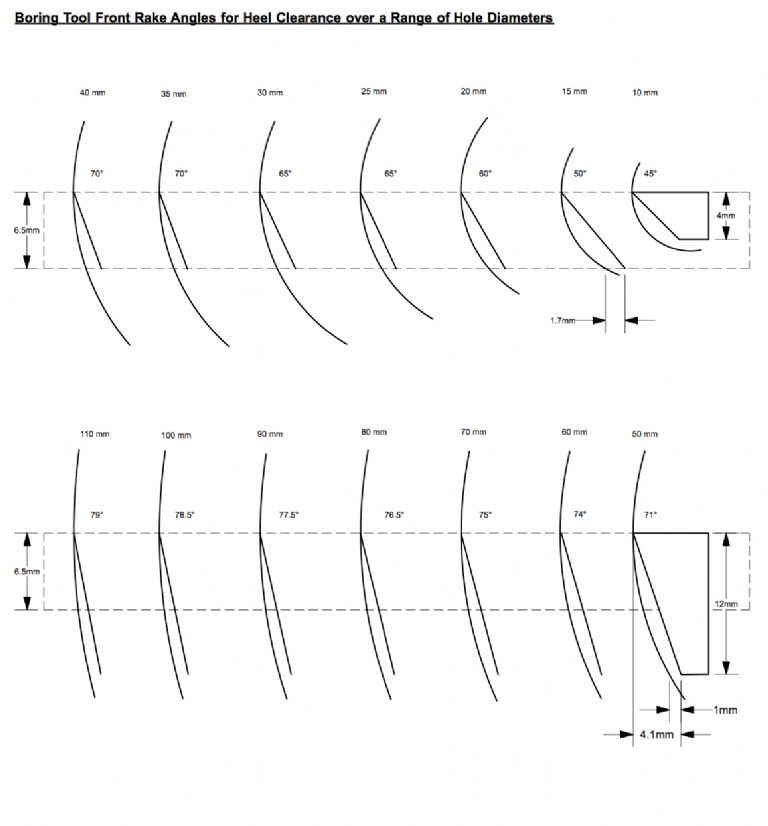Bill is quite correct to chide me for oversimplified diagrams when compared to best practice book clearance angles.
However, at the modest cuts most home workshop machines constrain us to use, the simple form works well and has the great advantage of being relatively tolerant of small errors in height setting. As ever tip on centre height is best but a bit up or down is fine.
If you use a shallow 12 to 15 degree cutting rake angle the tool tip needs to be lifted above centre height to ensure the work clears the junction between the bottom of the cutting rake and top of the clearance rake. Interference there can really ruin the finish.
A relative neophyte taking their first baby steps into tool grinding and setting has quite enough to worry about without the added complication of figuring out how much to set the tool above centre height to avoid interference where the two angles meet. The smaller the hole the harder it all gets.
Fact is the clearance angle below the cut is in the wind and its exact value largely irrelevant to folk like us. Over the years I've slowly come to the conclusion that, for our small cuts, dead sharp (and not negative rake) is much more important than angles to the book.
Top rake is needed because a flat top tool is effectively working in negative rake as the work approaches the tool from behind the edge.
Clive
Martin Johnson 1.










